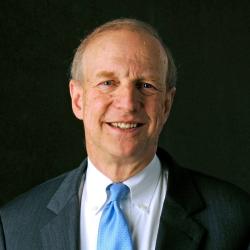Industrialized societies are facing major challenges with respect to their citizens’ retirement security. Across the globe, populations are aging rapidly. At the same time, too many households are not saving adequately for their retirement and other long-term needs even though saving vehicles are available.
This policy brief summarizes major parallel efforts currently under consideration in the U.S., the UK and New Zealand to address the retirement security shortfall by expanding personal saving for retirement. The proposals would employ a common strategy — promoting “automatic” saving by individuals within a voluntary private pension system — to make private-sector savings a more effective supplement to a base of government-provided pensions.
Two Problems with the Current System in the United States
In the United States, much of the shortfall in private retirement savings is attributable to two factors. First, the structure of financial incentives for saving in the United States is ineffective. For decades, our system of tax preferences for retirement saving has been essentially “upside down.” By basing our employer plan and individual retirement account (“IRA”) income tax incentives mainly on deductions and exclusions — which are proportional to the saver’s tax bracket — we tend to “encourage saving least for those who need to increase their saving most, and most for those who need to increase their saving least.”
A second major reason for the shortfall — and the focus of the proposals described here — is that the system does not make it easy enough to save. In the U.S. (as in the United Kingdom), a shrinking percentage of workers are covered by a defined benefit or other employer pension plan that does the job of saving for them through automatic employer contributions that demand no employee initiative. Most American employees who have a retirement plan at work are covered by a 401(k) plan, which typically requires them to take initiative and work their way through several key decisions in order to save. Most 401(k) plans currently require employees to decide whether to participate, to take action if they wish to enroll in the plan, to decide on the level of their contributions, and to decide how those contributions will be invested.
In fact, these employees are the fortunate ones. About half of the U.S. work force — some 71 million employees and self-employed individuals — have no employer plan. If these individuals wish to save for retirement on a tax-favored basis, they generally need to do even more than those who are 401(k)-eligible: they need to select an IRA provider from among many financial institutions and then take the steps necessary to open the IRA, in addition to navigating the decisions regarding level of contributions and investment.
Employees who do join 401(k) plans (as well as some IRAs) benefit from the automatic nature of payroll deduction. Plans typically permit but do not require participating employees to renew their contribution elections every year, so payroll deductions and the related contributions, once begun, continue automatically until the employee elects to make a change. However, 401(k)s traditionally have not made the initial election to participate automatic, nor have they encouraged participants to increase their contributions or to rebalance their investment portfolios over time. The force of inertia and the difficulty of making some of the associated decisions have adversely affected millions of employees.
These shortcomings can be remedied by a simple approach called the “automatic 401(k),” a plan designed “to recognize the power of inertia in human behavior and enlist it to promote rather than hinder saving.” The automatic 401(k) is based on an integrated strategy, formulated by the U.S. Treasury in the late 1990s, of using default arrangements to promote saving without sacrificing individual choice. Starting when automatic enrollment was first defined and approved as a permissible option for 401(k) plans in 1998, increasing numbers of plans have provided that employees will automatically participate in the plan at a prescribed contribution level and with a default investment unless the employee takes the initiative to opt for a different contribution percentage or investment or to opt out entirely.
Ideally, unless the employee chooses otherwise at any time, contributions would automatically increase from year to year (or in conjunction with pay raises), would automatically be invested in appropriately asset-allocated, balanced, diversified, and low-cost funds, and, ultimately, when the employee leaves the employer, would be automatically rolled over to an IRA or another plan. Workers could always choose to override these defaults.
As of last year, an estimated 30 percent of large 401(k) plans were using automatic enrollment. Economists who have systematically observed several of these plans have concluded that the evidence strongly indicates that automatic enrollment has been effective at increasing participation, especially among lower- and moderate-income workers, minorities and women. This evidence, including the expanding use of automatic features in U.S. 401(k) plans, has had a persuasive influence on the three proposals discussed here.



